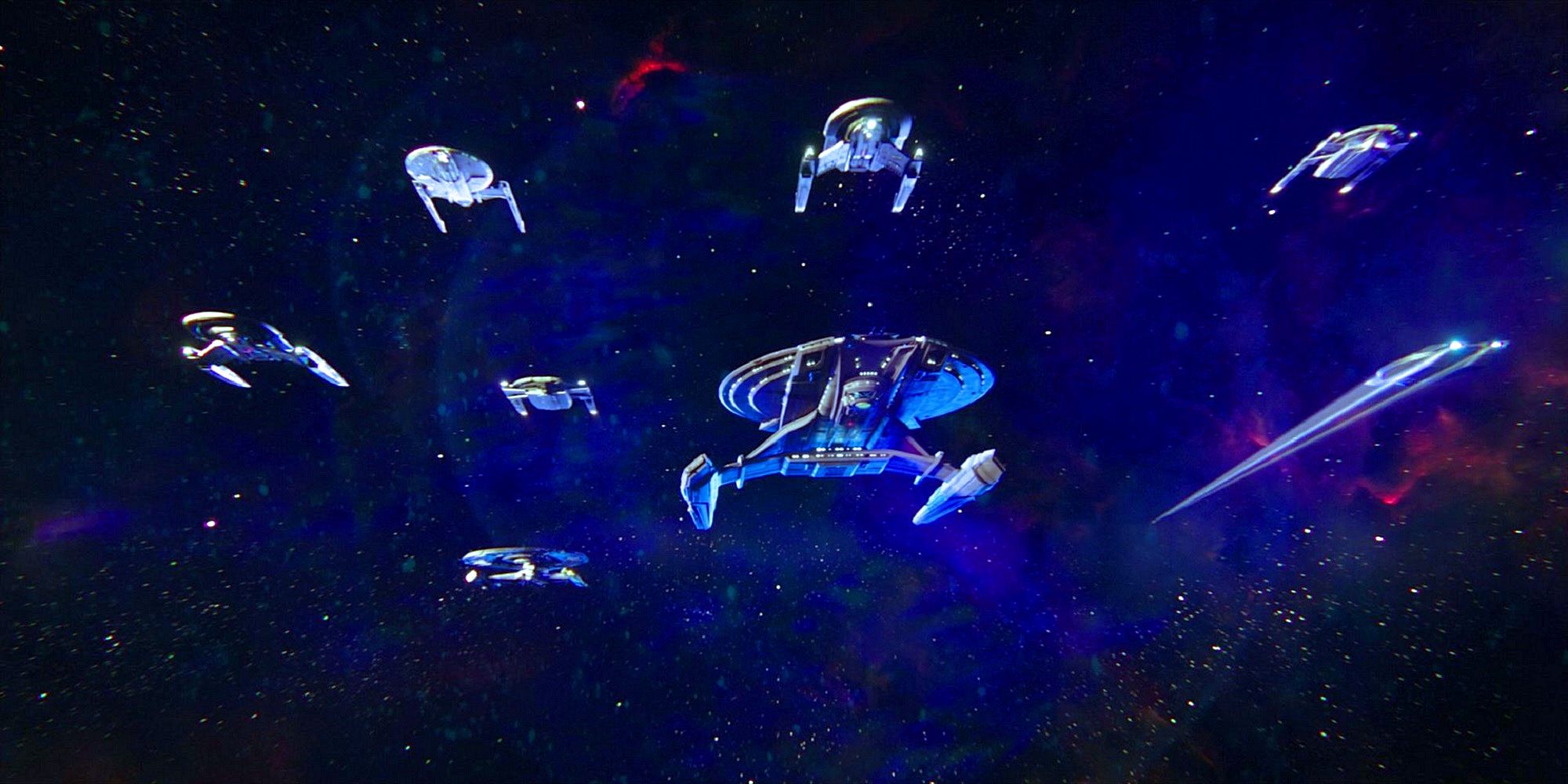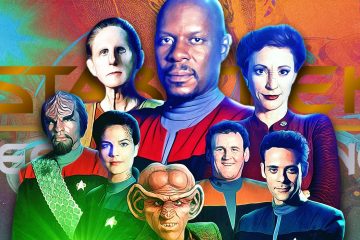The forthcoming final season of Star Trek: Discovery will bring another mini era in Gene Roddenberry’s ever-expanding universe to an end. As with series like Deep Space Nine and Enterprise before it, the show ends its run with a reputation as a controversial entry in the canon. However, one reason the show seemed so jarring to longtime fans comes from one of Roddenberry’s own principles. In its first seasons, Star Trek: Discovery drastically departed from the recognizable design elements that created a level of synchronicity across the previous shows. Done to expand the visual vocabulary of the franchise in the modern era, it may have proved to be too much of a departure.Interestingly, the design of the USS Discovery, the Crossfield Class starship at the center of the show, hearkens back to a Ralph McQuarrie original from Planet of the Titans. One of the many feature film ideas before The Motion Picture, the ship was a massive departure from Matt Jefferies’ Enterprise design. However, when Gene Roddenberry created Star Trek: The Next Generation, with its own updated Enterprise, he wanted it to be different. The new series was set in a new century, so the technological advancement was easy to rationalize. Just like the 20 years between the first and second live-action series, production design and visual effects continued to advance in the 12 Star Trek-less years between Enterprise and Discovery. Everything from the ship design to the iconic alien villains the Klingons were given a modern update. The producers on Discovery weren’t trying to run away from the Star Trek history. Rather, like The Next Generation, the show needed to add more to the canon than it referenced. While this was not ultimately the wrong call, the departures may have been a bit too drastic. Just as George Lucas’s Star Wars prequel films looked nothing like the original trilogy, this new Star Trek didn’t “feel” like the franchise of old.Production realities were the driving force between the visual homogeny between The Next Generation, Deep Space Nine and Star Trek: Voyager. The shows all took place at the same time, so similar production design and even some same props, costumes and ships, equally made sense. Enterprise offered an entirely new visual setting yet retained many design elements familiar to fans. However, before Discovery the 2009 reboot film introduced radical changes. Unlike McQuarrie, they didn’t change the silhouette of the Enterprise, but the increased size of the ship and its “ample nacelles” shocked fans. The production designers on Discovery not only had to consider the previous series’ designs but also the feature film look.RELATED: Star Trek: Discovery’s Season 1 Twist Was Genius and Hurt the Show
The forthcoming final season of Star Trek: Discovery will bring another mini era in Gene Roddenberry’s ever-expanding universe to an end. As with series like Deep Space Nine and Enterprise before it, the show ends its run with a reputation as a controversial entry in the canon. However, one reason the show seemed so jarring to longtime fans comes from one of Roddenberry’s own principles. In its first seasons, Star Trek: Discovery drastically departed from the recognizable design elements that created a level of synchronicity across the previous shows. Done to expand the visual vocabulary of the franchise in the modern era, it may have proved to be too much of a departure.
Interestingly, the design of the USS Discovery, the Crossfield Class starship at the center of the show, hearkens back to a Ralph McQuarrie original from Planet of the Titans. One of the many feature film ideas before The Motion Picture, the ship was a massive departure from Matt Jefferies’ Enterprise design. However, when Gene Roddenberry created Star Trek: The Next Generation, with its own updated Enterprise, he wanted it to be different. The new series was set in a new century, so the technological advancement was easy to rationalize. Just like the 20 years between the first and second live-action series, production design and visual effects continued to advance in the 12 Star Trek-less years between Enterprise and Discovery. Everything from the ship design to the iconic alien villains the Klingons were given a modern update. The producers on Discovery weren’t trying to run away from the Star Trek history. Rather, like The Next Generation, the show needed to add more to the canon than it referenced. While this was not ultimately the wrong call, the departures may have been a bit too drastic. Just as George Lucas’s Star Wars prequel films looked nothing like the original trilogy, this new Star Trek didn’t “feel” like the franchise of old.
Production realities were the driving force between the visual homogeny between The Next Generation, Deep Space Nine and Star Trek: Voyager. The shows all took place at the same time, so similar production design and even some same props, costumes and ships, equally made sense. Enterprise offered an entirely new visual setting yet retained many design elements familiar to fans. However, before Discovery the 2009 reboot film introduced radical changes. Unlike McQuarrie, they didn’t change the silhouette of the Enterprise, but the increased size of the ship and its “ample nacelles” shocked fans. The production designers on Discovery not only had to consider the previous series’ designs but also the feature film look.
#Discovery #Initially #Departed #Key #Star #Trek #Staple
Note:- (Not all news on the site expresses the point of view of the site, but we transmit this news automatically and translate it through programmatic technology on the site and not from a human editor. The content is auto-generated from a syndicated feed.))



